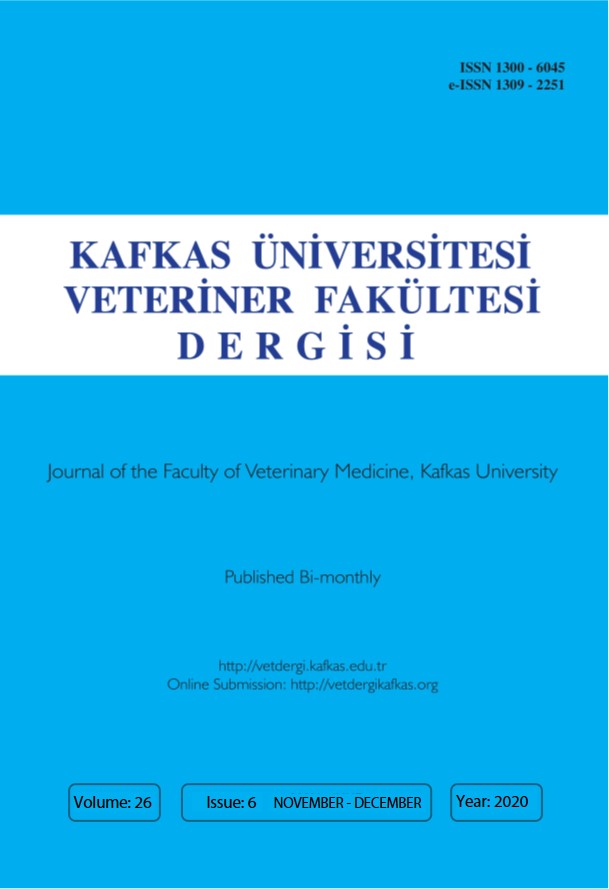
This journal is licensed under a Creative Commons Attribution-NonCommercial 4.0 International License
Kafkas Üniversitesi Veteriner Fakültesi Dergisi
2020 , Vol 26 , Issue 6
Accomplished Management of Chlamydophila abortus-induced Enzootic Sheep Abortions: The Case of Şavşat (Turkey)
1Kafkas University, Faculty of Veterinary Medicine, Department of Microbiology, TR-36300 Kars - TURKEY2Republic of Turkey Ministry of Agriculture And Forestry, Erzurum Veterinary Control Institute, TR-25070 Erzurum - TURKEY
3Kafkas University, Faculty of Veterinary Medicine, Department of Pathology, TR-36300 Kars - TURKEY DOI : 10.9775/kvfd.2020.24380 Infectious sheep abortions caused by bacterial agents such as Brucella melitensis, Campylobacter spp., Listeria spp., Chlamydophila abortus etc. lead significant economic losses in sheep enterprises. Many of these bacteria such as C. abortus that causes enzootic sheep abortion are contagious and zoonotic, as well. "Good veterinary practices" performed accurately and timely are extremely important in the management of the outbreak and minimizes the economic losses caused by these infections. This study aimed to diagnose infectious sheep abortions and to manage the outbreaks observed in two enterprises with 850 Hemşin sheep in Şavşat district of Artvin province, Turkey. The disease was diagnosed by conventional and real-time PCRs with detecting C. abortus DNA in five aborted fetal tissues. The diagnosis was confirmed immunohistochemically. In the course of the outbreak management, aborted sheep were weed out, treated with 5 mL/sheep I.M. of oxytetracycline for 5 times 24 h apart and got maintained for 3-4 weeks until disposed of by the owners. Pregnant sheep were administered 5 mL/sheep I.M. of oxytetracycline for 3 times as 3 days after the first application and 5 days after the second application. A mineral-amino acid supplement was also administered to the pregnant sheep by adding 15 mL of the drug to 0.5 L water for each sheep for 3 days. For the prophylactic purpose, tetracycline with a dose of 20 mg/kg bw/day was recommended to add to drinking water once a day for 3-5 days following the initial treatment. For biosafety, aborted materials were covered with quicklime and buried in soil depth of 1.5 m and contaminated areas were disinfected with 0.5% bleach once a day for 3 days. A protective immunization could not be done because of the absence of vaccines in the national market and some concerns about the vaccination of late-pregnant sheep. The sheep enterprises were closely monitored for 4-5 weeks until the birth season ended. Keywords : Chlamydophila abortus, Hemşin sheep, Outbreak management, Şavşat, Artvin, Turkey










